Art & Exhibitions
Is There Still Life in the Still Life Genre? Yes, and OUTLET’s New Show Proves It
The exhibition "Still.Life" proves the art historical style's enduring vitality.
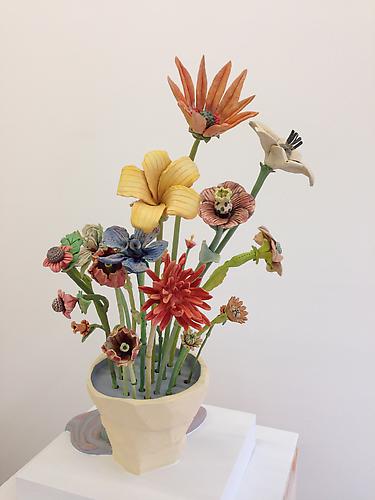
The exhibition "Still.Life" proves the art historical style's enduring vitality.

Jeffrey Grunthaner

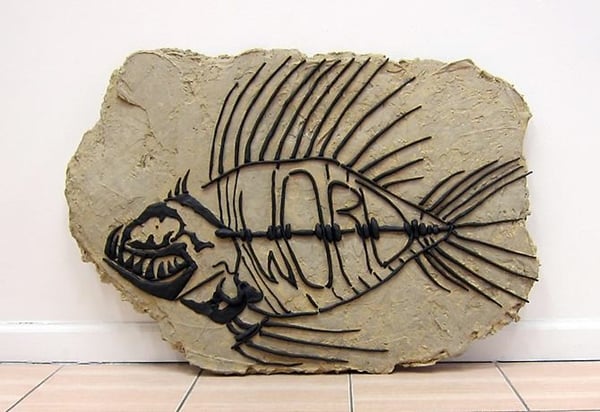
Brent Everett Dickinson, Geo-Semiosis #1 (2013).
Courtesy the artist, OUTLET Fine Art.
The risk involved in mounting an ambitious show in a space as small as Brooklyn’s OUTLET Fine Art is that more might be conveyed in the curatorial statement than actually becomes apparent in the gallery. Asking viewers to make the leap from Renaissance and Baroque period artists such as Jan van Eyck, Jacobo de Barbari and Juan Sanchez Cotan, to the works currently on view at OUTLET seems like an unnecessarily forced art historical connection. But if you look at the works by the five artists included in the well-curated show, “Still.Life” (which closes March 30), a unifying idea starts to emerge. Each artist is pursuing an authentic strategy for engaging with the visual language of still life across media. Whatever the show might lack in intensity—being somewhat sparse—it makes up for by asking the question: What can still lifes look like only today? The answers it proposes are very compelling.

Genesis Belanger, “Phase Change (2014).
Courtesy the artist, OUTLET Fine Art.
That said, it is by no means a wholly digital show. The first works you’ll encounter—Heeseop Yoon’s Still Life 28 (2014), a labyrinthine and site-specific wall installation composed of black tape on mylar, and Genesis Belanger’s Phase Change (2014), a crafts-like work of eerily colored porcelain flowers—call to mind less the traditional imagery of still lifes than industrialized manufacturing. Positioning these works at the entrance of the exhibition announces the recurring motif of trying to create singular objects from materials wholly reproducible and standardized, which seems to be the absorbing task of most new media art. At the same time, both Still Life and Phase Change critique their oil-on-canvas precedents. Beneath the saccharine allure of Belanger’s potted flowers one detects something sinister, inert; and Yoon’s Still Life feels like the afterimage of some sprawling tidal wave frozen and virtually abstract.
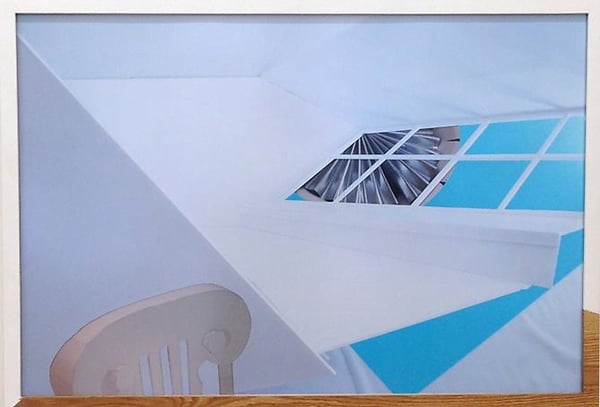
Andrew Ross, LZ 129 (2014).
Courtesy the artist, OUTLET Fine Art.
Andrew Ross’s LZ 129 (Cockpit) and LZ 129 (both 2014) are two parts of an exploded re-mapping of interior space—presumably, the inside of a yacht. The theme of yachting follows nicely from the historical subject matter of still life paintings, which were long devoted to picturing the belongings of the well-to-do. But Ross’s digital prints are so deconstructed that they completely remodel the interiors they are based on and all notions of ownership fall away. What viewers are left with is a puzzling sense of tranquility, a sensation verging on the sublime, where a partial profile of a swiveling chair serves as our main point of perspectival orientation. Similarly, Katie Torn’s giclée print Still Life with My Little Pony (2013) exemplifies what still lifes can look like today. Here the format becomes less a contemplative experience with a clearly-defined center of focus, and more an assortment—or even a medley—of objects. With both Ross and Torn, what saves their works from sheer chaos is the consideration they have for the arrangement of figures within a framed space.
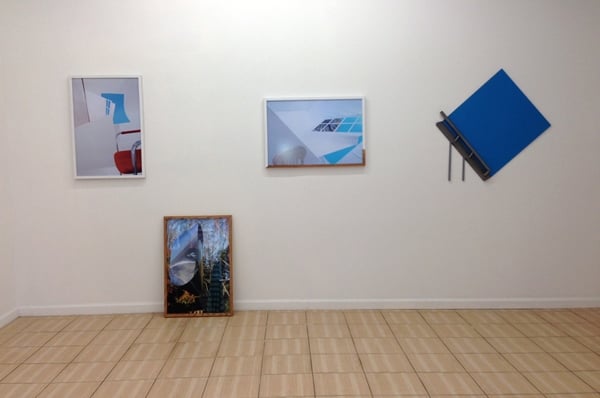
“Still.Life” installation view.
Courtesy OUTLET Fine Art.
Given a room all its own, Brent Everett Dickinson’s I Can’t Feel My Legs: an Indoor Earthwork is something like a mock-installation of a forest that pokes fun at its own artificiality. Wryly using aspects of nature photography, land art, sculpture, and text, Dickinson looks at the term “nature morte” from practically every imaginable angle, taking the phrase to a literal extreme while also extending it into a metaphorical environment. The energy emanating from this installation is nothing short of bizarre. It includes a moaning rock mounted on a wall and a seedy-looking wallpaper forest, juxtaposed with aspects of land art and Surrealist photography. (It’s a long story, but a soon-to-be fossilized skeleton of a fish forms an essential part of the installation.) The complexity of the elements in I Can’t Feel My Legs seems to reinterpret “dead nature” as a kind of virtual world—not quite believable, but not wholly false either.
Rather than eulogize contemporary experience in all its technocratic glory, “Still.Life” examines the enduring vitality of still life painting by extending it through digital media and sculptural forms. The viewer comes away from the exhibition with a sense of what is possible for the form, as well as a list of artists to watch out for. In spite of its art historically informed theme, nothing about the show feels retroactive or allusive. Every work by each of the five artists is distinctly contemporary, meaning that “Still.Life” achieves what it set out to do. If anything, one wishes to see the idea of a new still life taken further, perhaps accompanied by contemporary interpretations of other traditional forms.
“Still.Life” continues at OUTLET Fine Art through March 30.
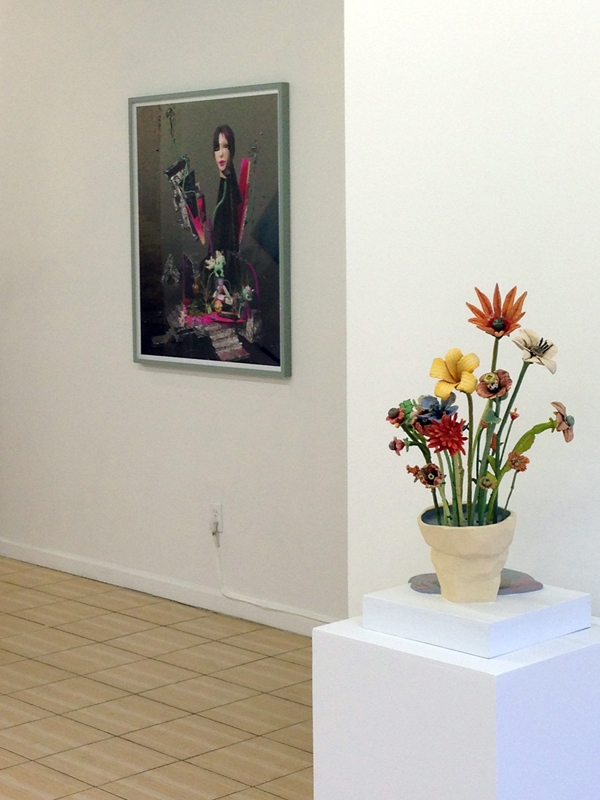
“Still.Life” installation view.
Courtesy OUTLET Fine Art.